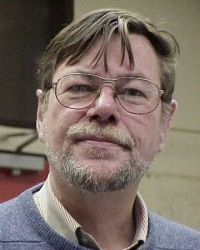
Pierre Vilain began his studies in physics in 1960 at the age of 16. Four years later he was proclaimed a graduate in physical sciences with LPGD and, 4 years later again, a doctor of sciences after having defended a PhD thesis on the physics of hypernuclei. In 2005, he wrote a higher education aggregation thesis. Throughout his career, he has benefited from FNRS contracts of which he will be a Senior Research Associate when he retires in 2010. He will also be a part-time Lecturer for his highly appreciated introductory and advanced physics courses on elementary particles. Most of his career will be devoted to neutrino physics, of which he will become a world-renowned expert. He was involved in several experiments carried out with neutrino beams at CERN, and for one, at Fermilab, in the USA. Chosen from around 130 published articles, here is a limited selection of the main results obtained.
In 1973, following an experiment carried out in the large Gargamelle bubble chamber at CERN, the collaboration published two articles, one concerned the observation of events compatible with the elastic scattering of \(\nu_{\mu}\) (or anti-\(\nu_{\mu}\) ) \(e^{-} \rightarrow \nu_{\mu}\) (or anti-\(\nu_{\mu}\) ) e-, the other of interactions of the type \(\nu_{\mu}\) (or anti-\(\nu_{\mu}\) ) N without muon in the final state. Both establish the existence of so-called neutral-current interactions, involving the exchange of a \(Z^{0}\) boson, predicted by the Glashow-Weinberg-Salam Standard Model. The first publication will earn the authors the 2009 prize for the class of particle physics of the European Physical Society.
The detector designed at Fermilab consisted of a small nuclear emulsion target followed by electronic trackers. In 1976, for the very first time, the production and decay vertices of a neutral hadron were observed separately, leading to a lifetime of the order of \(6.10^{-13}\) s, compatible with that of a charmed neutral hadron. In 1980, in a similar experiment at CERN where the large BEBC bubble chamber served as trackers, 8 similar events were detected, thus confirming the observation.
The CHARM-II electronic detector, with its 690 tons instrumented target, exposed to CERN's n beam, was designed to measure with unrivaled precision, on the order of a %, the electroweak mixing angle \(sin^{2} \Theta_{w}\), and this from the measurement of the ratio of the cross sections of purely lepton interactions, of \(\nu_{\mu}\) and of anti-\(\nu_{\mu}\), their elastic scatterings on electrons. The final result, with an accuracy of 2% will be published in 1984.
The OPERA detector, with its instrumented target of 1.25 kt nuclear emulsion, was assembled in the Gran Sasso underground laboratory, and exposed to the CERN neutrino beam, 730 km away. This allowed, with a significance of more than 6 standard deviations, to observe for the first time the appearance of \(\nu_{\tau}\) in an initially pure beam of \(\nu_{\mu}\), resulting from the mixing between neutrino mass and flavor eigenstates : the phenomenon of oscillations. The final result will be published in 2018.
In the dozens of messages of condolence received from all over the world from his former collaborators, the same words always recur: his competence, his availability for collaboration, the kindness with which he advised the youngest, all discreetly. Finally, it will be recalled that he was a dynamic president of the physics department and that he, among other responsibilities, belonged to the Particle Physics office of the European Physical Society and represented Belgium on the ECFA board, the committee in charge of advising CERN on its long-term scientific programme.
